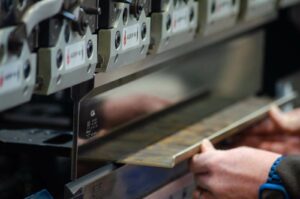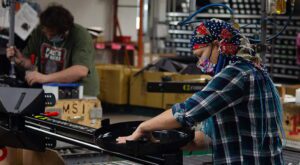
What was once a singular internal strategy for Toyota to better compete with western automakers, lean manufacturing has successfully made its way into the mainstream manufacturing ethos as a revolutionary and transformative production process for reducing waste, improving flow, and increasing production.
Lean manufacturing principles challenge conventional mass-production practices as they place greater emphasis on efficiency and waste reduction while never sacrificing quality or customer satisfaction. Businesses large and small that understand the principles of lean manufacturing can partner with a contract manufacturer to improve efficiency, control costs, eliminate waste, and better position themselves for success over competitors.
What is Lean Manufacturing?
Originating from the Japanese model of efficiency, lean manufacturing is a manufacturing process that consists of a set of methods and processes that help identify and eliminate waste from manufacturing operations while simultaneously maximizing productivity. While mass production methods emphasize increased total output for higher profit margins, lean manufacturing focuses on streamlining production processes to reduce cycle time, increase production quality, and enhance customer satisfaction.
Along with waste removal, one of the core tenets of lean manufacturing philosophy is continuous improvement. Since lean manufacturing originates from Japanese business philosophy, continuous improvement is also commonly referred to as Kaizen, the Sino-Japanese term meaning “change for the better.” Contract assembly service providers that adhere to lean manufacturing philosophies, -specifically the creed of Kaizen – proactively strive for perfection and continually seek to optimize their production processes to better serve their customers.
Lean manufacturing is a manufacturing process that consists of a set of methods and processes that help identify and eliminate waste from manufacturing operations while simultaneously maximizing productivity. Manufacturers favor lean manufacturing as a methodology that optimizes the production process, boosts innovation, decreases cost, and reduces lead times.
Eliminating the Eight Forms of Manufacturing Waste
The elimination of waste from manufacturing processes is one of the main foundational pillars of lean philosophy. Commonly referred to as muda, its original Japanese term, waste refers to any inefficiencies within manufacturing processes. Simply stated, waste can be viewed as anything that does not have or add value to the process or final product. Businesses that partner with a contract assembler that seeks to continuously eliminate all forms of waste from production processes will ensure facilities and operations remain efficient long into the future. While lean manufacturing usually focuses on seven forms of waste, the list has recently been expanded to include eight, commonly illustrated by the acronym, DOWNTIME.

Defects – Defects refer to mistakes that require resources, time, and money to fix. Defects are commonly caused by poor quality controls, lack of standards, and uncontrolled inventory levels.
Overproduction – Overproduction can eat away significant portions of business capital. Overproduction commonly occurs due to unclear customer needs, poorly applied automation, and just-in-case production scenarios.
Waiting – Waiting occurs anytime production is halted, drastically affecting production efficiency. Waiting is commonly caused by unbalanced workloads, unplanned downtime, and insufficient staffing.
Not utilizing talent – Underutilizing and overlooking internal talent is now considered a form of manufacturing waste. This is typically caused by poor communication, lack of teamwork, and poor management.
Transportation – Transportation waste refers to the byproducts resulting from moving parts or products around. Transportation without strategy leads to increased costs and a greater likelihood of product damage. Transportation waste is commonly caused by poor plant layout, misaligned process flow, and poorly designed systems.
Inventory excess – The common precursor to inventory excess is usually a rapid increase in customer demands. Many factors can contribute to inventory excess including poor monitoring systems, overproduction, and unreliable suppliers.
Motion waste – This type of waste refers to any excess movement by employees or machines. Motion waste is commonly caused by poor workstation layout, shared equipment, and siloed operations.
Excess processing – Excess processing refers to completing the same task multiple times. These inefficiencies increase costs and drain valuable resources. Common examples of excess processing include re-entering data, requiring multiple signatures, and excessive/redundant reporting.
Lean Manufacturing Tools and Methods
Original equipment manufacturers (OEMs) and businesses can improve product quality and production time while reducing costs by partnering with a contract manufacturing partner who can remove unnecessary waste from the production system through the strategic implementation of certain lean manufacturing tools and methods. Some of these tools and methods include:
6S – Otherwise known as 5S + safety, 6S is a workplace methodology that aims to promote and sustain a high level of productivity and safety throughout a workspace. The 6s system includes the following steps: sort, set in order, shine, standardize, sustain, and safety.
Bottleneck Analysis – This type of analysis is commonly used in lean manufacturing to identify the weakest link or proverbial ‘bottleneck’ inhibiting the flow and speed of the overall production process. Increasing proficiency of just one or two smaller functions can often dramatically speed up the entire manufacturing process.
Just-in-Time (JIT) – Just-in-time manufacturing is a lean manufacturing method that provides contract assemblers the flexibility to go into production only when a customer has a specific request. JIT processes help contract manufacturers mitigate inventory excess by transitioning to an on-demand system of production.
Value Stream Mapping – This tool involves the creation of a flow diagram to visualize each step in the value process. The visualization of production steps allows for further analysis to identify waste and areas of inefficiency to reduce cost and boost production efficiency.
Total Productive Maintenance (TPM) – TPM is a holistic approach to production and equipment maintenance that aims to improve integrity and quality of manufacturing process. TPM emphasizes proactive and preventive maintenance to maximize the up-time and operational efficiency of equipment, and ultimately empower operators to take on more responsibility regarding equipment management and maintenance.
Rank Order Clustering (ROC) – ROC is a method for production flow analysis based on weight and data reorganization. This method is designed to optimize the manufacturing process based on integral independent variables.
Partnering with a Contract Manufacturer that Adheres to Lean Manufacturing Principles
A qualified and experienced contract manufacturer that consistently upholds lean manufacturing principles will help companies scale their business without any of the unnecessary hassle. Businesses should partner with a contract manufacturer who firmly adheres to lean manufacturing concepts to ensure the production of high-quality products that meet customer expectations.
A lean contract manufacturer will consistently look to optimize production processes so you can get your product to market faster and successfully capitalize on market opportunities.




